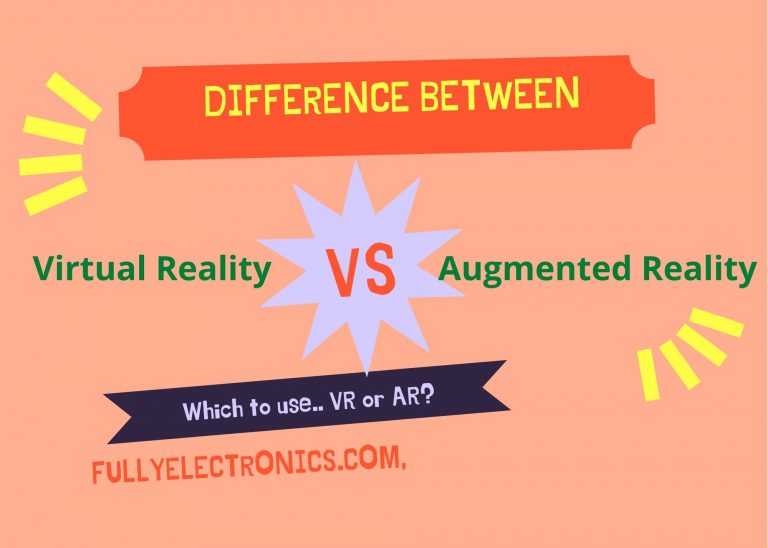
In this digital era, people are surely spending most of their time looking at screens of laptop, TV or cell phone and all these gadgets have become an integral part of our lives and Virtual Reality (VR) and Augmented Reality (AR) are the two technologies that are changing the way we use screens creating new and exciting experiences both in a different way.
There is always a confusion exists among people between VR and AR
This article will cover the emerging technology of the VR and AR industry and try to list down the following points.
* Definition of Virtual and Augmented Reality
* Brief history of virtual reality and augmented reality
* what is the exact difference between Virtual and Augmented Reality
* Applications of both technology
What is Virtual Reality ?
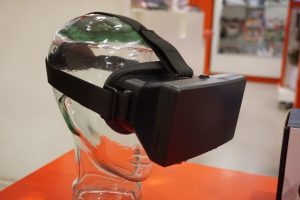
Virtual Reality, also known as VR, uses a headset with a built-in screen is a computer-generated simulation that displays a virtual environment for you to explore. These headsets use a technology called head-tracking which allows you to look around the environment by simply moving your head. VR simply replaces one’s environment into the digital world that’s designed to fool your senses from your brain.
What is Augmented Reality ?
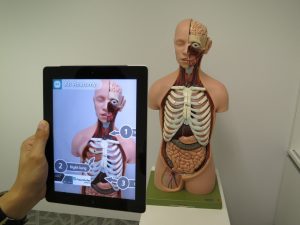
Augmented reality is also known as mixed reality and it is different from VR, this is because its main purpose isn’t to remove this present reality and transport you to another but rather is to be an enhancement of your real world with a lot of enchanted virtual items in it.
When an individual’s genuine environment is enhanced or augmented with computer-created pictures which are generally motion-tracked, then that is called augmented reality.
The popular mobile game Pokemon go, social apps, and even the NFL all use AR.
History of VR
In 1968 Ivan Sutherland and Bob sprout created the first VR head-mounted display that was connected to a computer and not a camera they called it the sword of Damocles and not only did it sound terrifying it looked terrifying this massive device hung from the lab ceiling and allowed users to explore rudimentary wireframe environments
In 1987, the term Virtual Reality is introduced by John Lanier, a computer scientist, researcher, and artist. He was the first person who started selling VR glasses.
In 1991, the Virtuality Group releases VR engines and games for a wide community. Players will sit in the ‘game pod’, wearing VR glasses and play VR games in real-time. Some of the machines were even connected so that players could play a multiplayer game.
Google launches Street View in 2007. Initially, only 5 cities in America were mapped.
In 2010, Palmer Luckey designs prototypes of VR Headsets (Gawai-VR), which is the forerunner to the Oculus Rift.
History of AR
Both virtual reality or VR and AR share a common ancestor The Sword of Damocles.
Built-in 1968, the Sword of Damocles was created by a computer scientist and researcher, Ivan Sutherland. His goal was to create the ultimate display. A digital interface capable of transforming the physical world. The prototype was so heavy, it needed to be suspended from the ceiling by a mechanical arm.
For all the hardware, it could only display basic wireframe rooms that were barely explorable. But it was one of humankind’s first experiments into replacing your real world with digital reality.
In 1974 Myron Kruger, artist and computer researcher, creates a laboratory “Video place” at the University of Connecticut dedicated to artificial reality. Augmented Reality began to experience a transition, from the laboratory to the world of business and industry
In 1990, The term ‘Augmented Reality’ was coined by the researcher of Boeing, Tom Caudell
In 1992, Louis Rosenburg, a researcher at the Armstrong Research Laboratory, developed a functional augmented reality system, called Virtual Fixtures, which were used in the United States Air Force Armstrong Labs and demonstrated their benefits to humans.
In the same year 1992, Steven Feiner, Blair MacIntyre, and Doree Seligmann introduced a Major Paper for the development of Prototype AR.
In 1998, Sports vision broadcasts the NFL game (American Football) by directly using the digital position markers in the field (yellow yard marker). This marks the beginning of the popularity of using Augmented Reality in the live broadcasting of sports.
https://en.wikipedia.org/wiki/1st_%26_Ten_(graphics_system)
In 1999 , Hirokazu Kato a Japanese national, developed the Augmented Reality Toolkit at HITLab and demonstrated at SIGGRAPH
In 2000 , Bruce.H.Thomas developed Augmented Reality Quake, an Augmented Reality Mobile Game shown at International Symposium on Wearable Computers
In 2009, For the first time Esquire magazine uses Augmented Reality in print, and apply it to create its pages come alive.
In 2013, Volkswagen released the MARTA Mobile Augmented Reality Technical Assistance) that serves to provide step by step instructions to the technician to repair the car according to the manual.
In 2014, Google launched an Augmented Reality device that can be used as wearable glass, known as Google Glass which had features of the in-built camera, display, and touch-pad.
https://www.google.com/glass/start/
In 2016, Microsoft launched a Mixed reality augmented head-mounted display smart glass known as Microsoft HoloLens.
In 2016, the popularity of the Augmented Reality application has increased dramatically due to the emergence of Pokemon-GO mobile games that combined AR technology with real-time location.
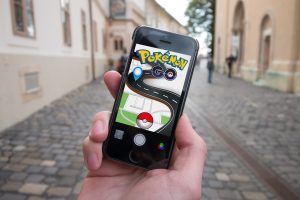
There are currently the two main delivery systems for AR content.
On the headset AR side, as of early 2018, the most widely used HMD is the Microsoft HoloLens. It is completely wireless and has a visor-like design. It runs on a rechargeable battery and its processing power is located inside its frame.
On the mobile AR side again, this is how most of the world will experience augmented reality for the first time.
The rapid development of smartphones has contributed to the growth of the VR and AR industries. That’s because the same components that make smart phones work, gyroscopes, accelerometers, miniaturized, high-resolution displays, are also required for AR and VR headsets.
Difference between Virtual Reality (VR) & Augmented Reality (AR)
Applications
* Virtual Reality
* Gaming
Most VR applications now fall into game category. With VR, users will feel like they are in the game world.This experience will make VR games more interesting to played compared to conventional games.
*Training
Simulation training for certain professions such as doctors, pilots, mechanics, miitiary and astronauts can be done using VR at a cost more effective and more measurable training assessments. VR applications of this type requires accurate real data to be able to simulate real conditions as closely as possible.
* Learning
Learning models such as lectures and practicals uses Virtual Reality and it allows users to observe in more detail, and also can participate interactively.
*Shopping
A virtual shopping experience will be an attractive alternative for online shopping. Users can see the desired item in more detail and in more efficient way.
*Advertising
This VR application is the right target for inbound marketing, which is the process of attracting potential customers with creating content, even before they have the intention to buy.
For example, the famous automobile manufacturer Volvo creates VR content so people can do a virtual test drive for their latest car. The application can be downloaded at: https://www.volvocars.com/us/about/our-points-of-pride/googlecardboard#DownloadApp
*Traveling
The VR application allows us to take a tour to see hotel facilities before we make a booking.Examples can be seen at:
https://p4panorama.com/panos/vythiri-village-360-virtual-reality-tour/
* Augmented Reality Applications
- Furniture
IKEA makes use of the Augmented Reality application to make it possible its customers virtually place furniture from the IKEA catalog on their house before deciding to buy it or not. This matter also to avoid the furniture they buy does not match its size with available space.
More information about this application can be found at
- Military
The American Army is experimenting with Augmented Reality gadgets which are connected to satellites to provide a orientation more clearly in their area of operation.
- Coloring Book
Disney developed Augmented Reality in the form of a coloring book. Like the Augmented Reality application in general, pictures in books coloring can be raised in the form of three-dimensional characters.The advantage is that the character has the same texture and color which is exactly the texture and color chosen by the user.
Other various applications of Augmented Reality includes
- Medical Field
- Tourism Industry
- Retail Industry
- Education
- Real Estate
- Entertainment Industry
As a conclusion we can say that, Augmented Reality adds things to your existing world and Virtual Reality changes your world.

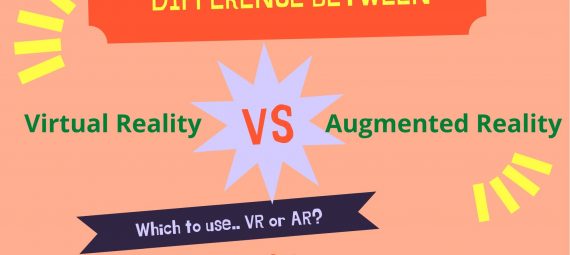
One thought on “Virtual Reality (VR) and Augmented Reality (AR)”
Comments are closed.